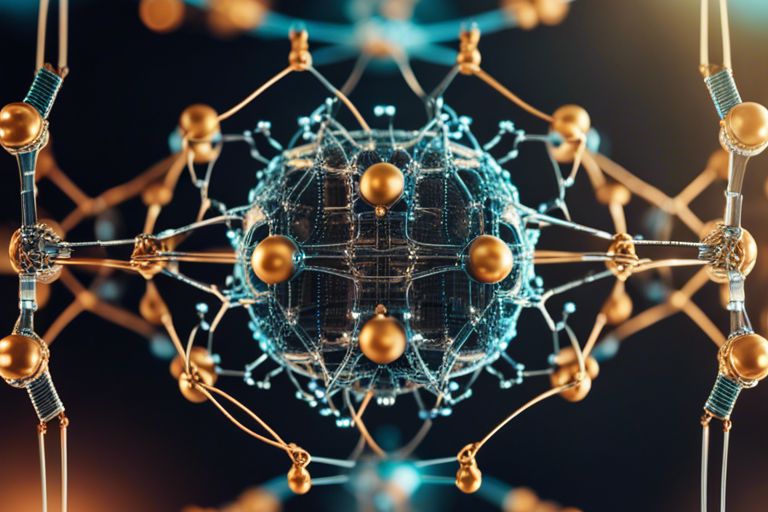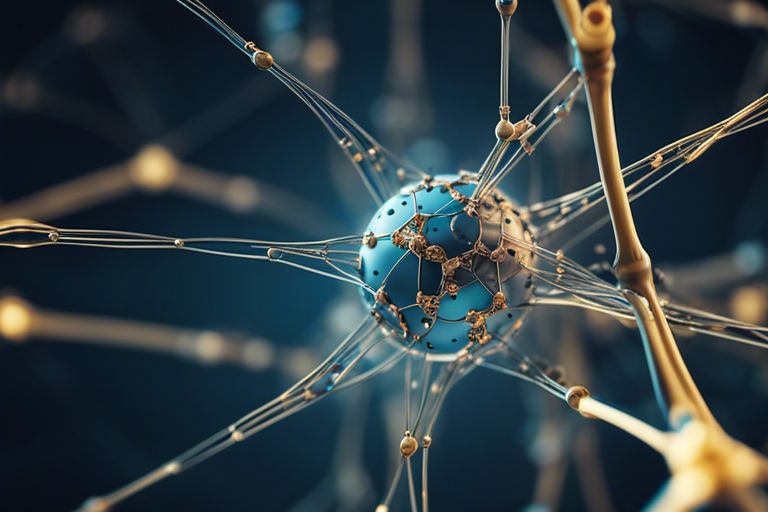What Is Endpoint Protection And Why It’s Critical For Cyber Security
You need to understand that endpoint protection is a vital component of your cyber security strategy. This technology...

It’s time to unravel the intricate world of neural networks and truly understand the science behind artificial intelligence. Dive into the complex algorithms and network structures that power machine learning and deep learning models. Discover how neural networks are revolutionizing industries and reshaping the future of technology. For a deeper exploration into this fascinating subject, check out What is Deep Learning: Unraveling the Power of Neural ….
If you’ve ever been intrigued by the inner workings of Artificial Intelligence (AI), then delving into neural networks is a must. These complex systems are at the core of many AI applications and have revolutionized various fields, from image recognition to natural language processing.
To comprehend neural networks, it is vital to grasp some fundamental concepts and terminology. At the heart of a neural network are neurons, which are mathematical functions that process and transmit information. These neurons are organized in layers, with each layer performing specific computations on the input data.
Activation functions, weights, biases, and connections are key elements that govern the behavior of neural networks. The activation function determines whether a neuron should be activated or not, weights adjust the strength of the connections between neurons, biases shift the activation functions, and connections transmit the signal from one neuron to another.
Neural networks are structured in layers, typically consisting of an input layer, one or more hidden layers, and an output layer. The input layer receives data, the hidden layers process the information, and the output layer produces the final result. Each layer contains multiple neurons that work in parallel to perform computations.
With the ability to learn from vast amounts of data and generalize patterns, neural networks have demonstrated remarkable capabilities in tasks such as image and speech recognition, medical diagnosis, and even autonomous driving. Their adaptability and scalability make them a powerful tool in AI.
The Neural Networks: A Deep Dive into AI’s Building Blocks blog post explores the intricate workings of neural networks. In this chapter, we research deeper into the learning mechanisms that make neural networks such powerful tools in the field of artificial intelligence.
An important aspect of neural networks is their ability to learn from data. In supervised learning, the network is trained on labeled datasets, where the correct output is provided. The network adjusts its parameters to minimize the difference between its predictions and the true labels. On the other hand, unsupervised learning involves training the network on unlabeled data, allowing it to discover patterns and structures on its own.
Supervised learning is commonly used in tasks like image classification and speech recognition, where labeled data is abundant. Unsupervised learning, on the other hand, is employed in tasks like clustering and dimensionality reduction, where the goal is to uncover hidden patterns in the data without explicit labels.
One of the key mechanisms underlying neural network learning is backpropagation. This algorithm computes the gradient of the loss function with respect to the network’s parameters, allowing for efficient adjustment of weights and biases during training. Optimization algorithms like Stochastic Gradient Descent (SGD) or Adam are then used to update the network’s parameters in the direction that minimizes the loss function.
Plus, it is crucial to choose the right optimization algorithm and fine-tune its hyperparameters to ensure the neural network converges to the optimal solution. The choice of optimizer can significantly impact the training process and the performance of the network, making it a critical decision in the design and training of neural networks.

Not only are neural networks revolutionizing the field of artificial intelligence, but they are also making a profound impact across various industries. Networks of interconnected artificial neurons are being used in healthcare for medical image analysis, disease diagnosis, and personalized treatment recommendations. In finance, neural networks are employed for fraud detection, algorithmic trading, and risk management.
Moreover, the automotive industry utilizes neural networks in autonomous vehicles for tasks like object detection, lane-keeping, and decision-making. In marketing and e-commerce, these networks enable personalized recommendations, targeted advertising, and customer behavior analysis, leading to better customer satisfaction and increased sales.
Breakthroughs in artificial intelligence are often synonymous with innovations in neural network technology. Breakthroughs in this field have led to the development of advanced natural language processing models like GPT-3, which can generate human-like text. Additionally, neural networks have been instrumental in the creation of self-learning agents for playing complex games like Go and StarCraft.
Any further advancements in neural network research could lead to enhanced decision-making capabilities in robots and machines, paving the way for more sophisticated AI systems that can outperform humans in various cognitive tasks.

For a deeper understanding of the future of Neural Networks and AI, it’s crucial to stay abreast of emerging trends and ongoing research. To examine the intricacies of this subject, explore the article Unraveling the Secrets of Neural Networks: Deep Learning ….
For those at the forefront of AI, keeping a pulse on emerging trends and research directions is crucial. From the exploration of more complex neural network architectures to the integration of AI with other cutting-edge technologies like quantum computing, the field continues to evolve rapidly. Researchers are also delving into areas such as explainable AI, federated learning, and neuromorphic computing to enhance performance and address limitations in current systems.
For organizations and professionals involved in AI development, staying informed about these trends and contributing to innovative research directions is key to pushing the boundaries of what neural networks and AI can achieve.
To address the ethical considerations and societal impact of AI, proactive measures must be taken to ensure that the deployment of neural networks aligns with societal values and norms. As AI systems become more pervasive, the implications of their decisions on individuals and communities must be carefully considered. Issues surrounding privacy, bias, and job displacement are critical areas that require attention.
Ethical guidelines and regulations are necessary to establish a framework for the responsible development and deployment of AI technologies. Transparency, fairness, and accountability should be at the core of AI systems to build trust with users and mitigate potential risks. Collaboration between stakeholders, including governments, industry leaders, researchers, and ethicists, is crucial to navigating the complex ethical landscape of AI.
To wrap up, neural networks are at the core of artificial intelligence, mimicking the human brain to process complex information and make decisions. Understanding the science behind these networks helps unravel the mystery of AI and its potential applications in various industries. By delving deep into the inner workings of neural networks, we gain insights into how machines learn, think, and adapt to new tasks. As technology continues to evolve, so too do these networks, paving the way for exciting advancements in the field of AI.
A: A neural network is a computer system inspired by the structure and functions of the human brain. It consists of interconnected nodes, known as artificial neurons, that process information and learn from data to perform tasks such as classification, regression, and pattern recognition.
A: Neural networks learn through a process called backpropagation, where the system adjusts the weights of connections between neurons to minimize the difference between predicted and actual outputs. This iterative process allows the neural network to improve its performance over time by fine-tuning its parameters based on the training data.
A: There are several types of neural networks, including feedforward neural networks, recurrent neural networks, convolutional neural networks, and generative adversarial networks. Each type is designed for specific tasks and data types, such as image recognition, sequence prediction, and generative modeling.
You need to understand that endpoint protection is a vital component of your cyber security strategy. This technology...
You rely on robust cybersecurity measures to protect your business from evolving threats, and Endpoint Detection and...